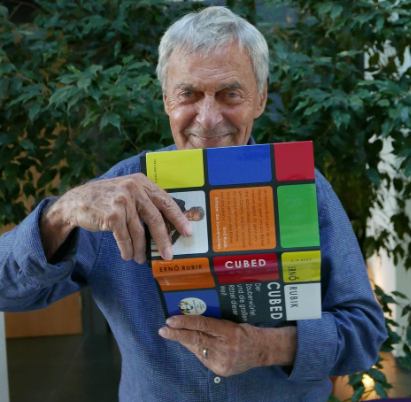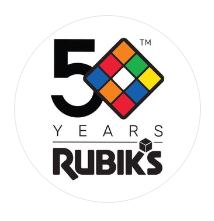| 50 Years Of Rubik's Cube |
| Written by Sue Gee |
| Sunday, 07 July 2024 |
|
The iconic 3D mechanical puzzle, Rubik's Cube, was invented in 1974 and celebrates its 50th anniversary this year. As well as being a popular puzzle that anyone can try to solve, it touches on some interesting mathematical concepts and challenges computer scientists to creating efficient search algorithms.
In case you need reminding, Rubik's Cube is a plastic cube covered with multicoloured squares, which the player attempts to twist and turn so that all the squares on each face are of the same colour and the story behind it is fascinating. The original intention of its inventor, Hungarian architect and professor Ernő Rubik was to create a teaching aid to help his students at the Academy of Applied Arts and Crafts in Budapest understand 3D objects. While preparing a course on descriptive geometry in 1974 and tinkering with the five Platonic solids, he became especially interested in the cube and as he wrote in his 2020 memoir, Cubed, The Puzzle of Us All, "it never once occurred to me that I was creating a puzzle.” Instead actual purpose of the structure he crafted was to solve the structural problem of moving the parts independently without the entire mechanism falling apart. He only realised that he had inadvertently created a puzzle when he scrambled his "Magic Cube" and then tried to restore it. Rubik was granted a patent in Hungary in 1976 and first test batches of the Magic Cube held together with interlocking plastic pieces that prevented the puzzle from being easily pulled apart were produced in late 1977 and released in toy shops in Budapest. It was when businessman Tibor Laczi took a Magic Cube to Germany's Nuremberg Toy Fair in February 1979 in an attempt to popularise it that it experienced its breakthrough. By 1980, it had been renamed Rubik's cube, adopted its iconic shape and name, and had won the Game of the Year (Spiel des Jahres) award in Germany. Over the decades, hundreds of millions of units were sold, with 200 million between 1980 and 1983 alone, gaining its status as the world’s best-selling puzzle game. Rubik's Cube has a strong appeal for computer scientists. According to the New York Times, it took Donald Knuth less than 12 hours to solve the puzzle, starting at his dining table in the evening and working straight through to the morning. I Programmer has followed mathematical breakthroughs over the years, starting with the discovery in July 2010, when we reported: No matter how much you shuffle the cube, no matter how long or how many devious twists you apply the cube can be returned to its original state in just 20 moves. This result was referred to at the time as the "God Number" as only a deity could possess the power to test millions of different combinations in the blink of an eye and we commented the finding it, after 30 years of effort on the part of mathematicians: seems all the more remarkable when you are told that there are 43,252,003,274,489,856,000 potential positions. The God number of 20 was for the 3x3x3 Rubik's Cube and had been found by brute force. The following year, in Rubik's Cube - The Order Of God's Number, we covered a finding made by Erik Demaine, Sarah Eisenstat, and Mikhail Rudoy that the smallest number of moves required to solve the nxnxn Rubik's cube is proportional to n^2/log(n). IProgrammer's report concluded with: It also raises the question of whether finding an optimal solution to the general cube is NP hard or not. That question that was subsequently answered six years later in 2017 by the same team of researchers and reported on in Rubik's Cube Is Hard - NP Hard which stated. It has now been proved that working out if a random cube is solvable in exactly n moves is NP complete. As we reported at the time, remarkable computer-aided achievement was made in 2015 when a 17x17x17 cube, with 66 followed by 1053 zeros different possible positions, was solved in seven and a half hours, see ou. More recently AI has taken on the challenge, as reported in AI Learns To Solve Rubik's Cube - Fast!. And what happens when you combine AI with robotics? Find out in AI Wins At Rubik's Cube With Just One Hand reporting on a feat demonstrated by Open AI. So thanks to Ernő Rubik whose invention has been such a source of fun for half a century and will no doube continue to open new frontiers. More InformationThe Rubik’s Cube Turns 50 (New York Times) Related ArticlesRubik's Cube - The Order Of God's Number Rubik's Cube Is Hard - NP Hard 17x17x17 Rubik Cube Solved In 7.5 Hours AI Learns To Solve Rubik's Cube - Fast! AI Wins At Rubik's Cube With Just One Hand To be informed about new articles on I Programmer, sign up for our weekly newsletter, subscribe to the RSS feed and follow us on Twitter, Facebook or Linkedin.
Comments
or email your comment to: comments@i-programmer.info
|
| Last Updated ( Sunday, 07 July 2024 ) |




